Themed collection Advanced Complex Inorganic Nanomaterials

Front cover
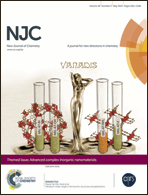
Inside front cover
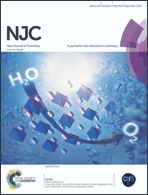
Back cover

Contents list
Introduction to the themed issue on Advanced Complex Inorganic Nanomaterials
The guest editors present the themed issue on Advanced Complex Inorganic Nanomaterials.
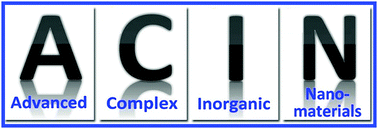
New J. Chem., 2014,38, 1825-1826
https://doi.org/10.1039/C4NJ90013H
Ordered mesoporous polymer-derived ceramics and their processing into hierarchically porous boron nitride and silicoboron carbonitride monoliths
This review describes the elaboration of ordered mesoporous non-oxide materials such as BN and SiBCN and the subsequent fabrication of derived monoliths by spark plasma sintering using the as-prepared powders.
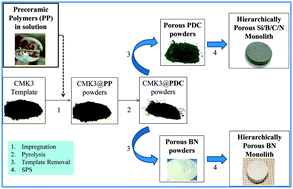
New J. Chem., 2014,38, 1923-1931
https://doi.org/10.1039/C3NJ01612A
Spin crossover with thermal hysteresis in cobalt(II) complexes and the importance of scan rate
Thermal hysteresis loop widths can be highly dependent on scan rate, usually being wider at faster scan rates.
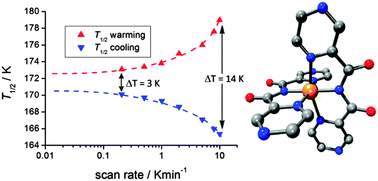
New J. Chem., 2014,38, 1932-1941
https://doi.org/10.1039/C3NJ01451G
Mesoporous non-siliceous inorganic–organic hybrids: a promising platform for designing multifunctional materials
An overview of the recent progress in the designed synthesis, modification and multifunctional applications of mesoporous non-siliceous inorganic–organic hybrid materials including metal phosphonates, carboxylates and sulfonates is presented.
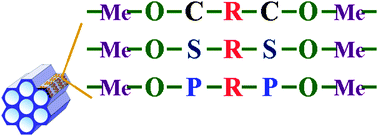
New J. Chem., 2014,38, 1905-1922
https://doi.org/10.1039/C3NJ01139A
Hollow micro/nanostructured materials prepared by ion exchange synthesis and their potential applications
We demonstrated the ion exchange synthesis of hollow micro/nanostructured materials and their applications in energy, catalysis and biomedicine.
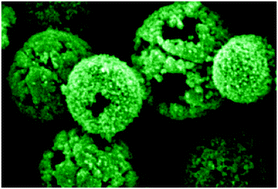
New J. Chem., 2014,38, 1883-1904
https://doi.org/10.1039/C3NJ00888F
Vanadium metal–organic frameworks: structures and applications
V-containing metal–organic frameworks are relatively rare, but have interesting and designable properties in sorption and catalysis – a critical review.
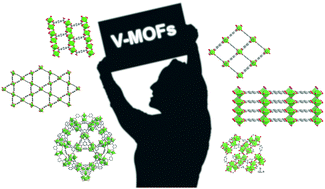
New J. Chem., 2014,38, 1853-1867
https://doi.org/10.1039/C3NJ01130E
Recent advances in the synthesis and applications of 2,6-dipyrazolylpyridine derivatives and their complexes
Recent highlights of the chemistry of 2,6-di(pyrazolyl)pyridine (bpp) derivatives include: multi-functional spin-crossover switches; biomedical sensors incorporating luminescent f-element centres; functional, self-assembled soft materials; and, the increased use of bpp complexes in catalysis.
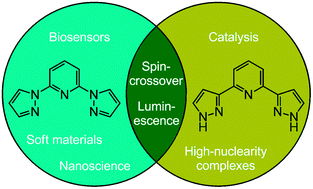
New J. Chem., 2014,38, 1868-1882
https://doi.org/10.1039/C3NJ00835E
Water and methanol adsorption on MOFs for cycling heat transformation processes
MOFs with high water uptake capacity and hydrothermal stability are gaining attention for low temperature heat transformation applications such as thermally driven adsorption chillers or adsorption heat pumps.
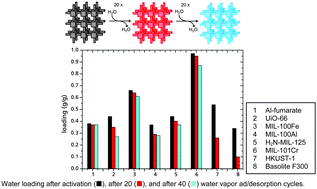
New J. Chem., 2014,38, 1846-1852
https://doi.org/10.1039/C3NJ01556D
Photoswitchable spin crossover nanoparticles
Recent developments on the characterization of photo-induced processes in spin crossover nanoparticles are presented.
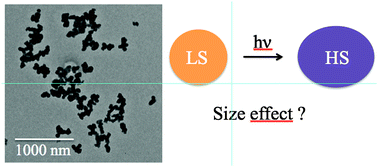
New J. Chem., 2014,38, 1840-1845
https://doi.org/10.1039/C3NJ01255G
Finite size effects in molecular spin crossover materials
In recent years, study of nano-objects exhibiting spin-state transitions has raised new interesting questions.
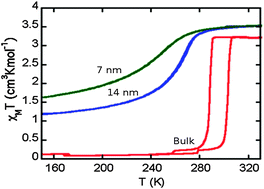
New J. Chem., 2014,38, 1834-1839
https://doi.org/10.1039/C3NJ01268A
Shape-controlled synthesis of ruthenium nanocrystals and their catalytic applications
We present recent advances in the synthesis and catalytic applications of Ru-based materials with spherical, one-dimensional, plate-like, and hollow nanostructures.
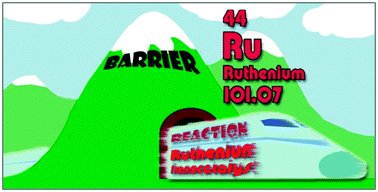
New J. Chem., 2014,38, 1827-1833
https://doi.org/10.1039/C3NJ01155K
Crystal structure and magnetic properties of the spin crossover complex FeII(ethyl nicotinate)2[AuI(CN)2]2
A new FeII two-step spin crossover (SCO) coordination polymer, FeII(ethyl nicotinate)2[AuI(CN)2]21, with four-inflection associated with phase transitions, has been synthesized.
![Graphical abstract: Crystal structure and magnetic properties of the spin crossover complex FeII(ethyl nicotinate)2[AuI(CN)2]2](/en/Image/Get?imageInfo.ImageType=GA&imageInfo.ImageIdentifier.ManuscriptID=C3NJ01564E&imageInfo.ImageIdentifier.Year=2014)
New J. Chem., 2014,38, 1955-1958
https://doi.org/10.1039/C3NJ01564E
Humidity dependency of the thermal phase transition of a cyano bridged Co–W bimetal assembly
A three-dimensional cyano-bridged Co–W bimetal assembly shows the humidity-dependent phase transition due to desorption or absorption of water molecules.
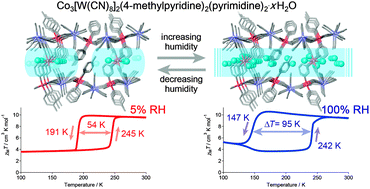
New J. Chem., 2014,38, 1950-1954
https://doi.org/10.1039/C3NJ01656K
Syntheses, structures and magnetic properties of two-dimensional chiral coordination polymers based on a tetradentate chiral ligand
Two chiral coordination polymers, Δ-[MII(S-pabn)]2[MoIV(CN)8]·3H2O (M = Cu and Co, S-pabn = (S)-N2,N2′-bis(pyridin-2-ylmethyl-1,1′-binaphthyl-2,2′-diamine)), with two-dimensional network structures, were synthesized by the reaction of MCl2·6H2O, S-pabn and K4[Mo(CN)8].
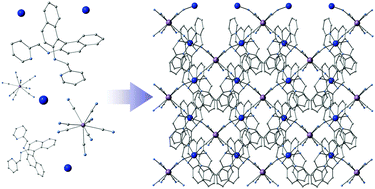
New J. Chem., 2014,38, 1946-1949
https://doi.org/10.1039/C3NJ01128C
Visible light driven non-sacrificial water oxidation and dye degradation with silver phosphates: multi-faceted morphology matters
Multi-faceted silver phosphate particles show improved photocatalytic activities compared to the irregular shaped particles both for water oxidation and dye degradation.
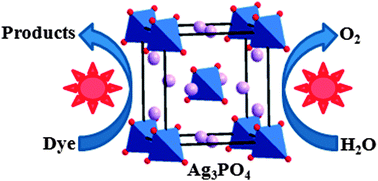
New J. Chem., 2014,38, 1942-1945
https://doi.org/10.1039/C3NJ01012K
Self-assembly synthesis of precursors to potential open framework alkali earth metal–organic complexes
A series of magnesium pyridinecarboxylic–dicarboxylic acid complexes, synthesised as precursors to potential framework materials, show a range of metal ligand and hydrogen bonding geometries. The pyridinedicarboxylic complexes show most promise as precursors for further syntheses.

New J. Chem., 2014,38, 2135-2143
https://doi.org/10.1039/C3NJ01218B
Preparation and characterization of Ti supported bimodal mesoporous catalysts using a self-assembly route combined with a ship-in-a-bottle method
The Ti supported bimodal mesoporous catalysts prepared by route II presented the higher dispersion of tetrahedrally-coordinated titanium species and activity in the epoxidation of cyclohexene as compared with route I.
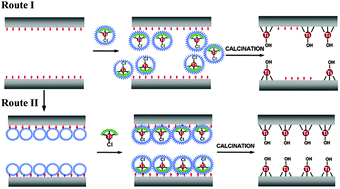
New J. Chem., 2014,38, 2128-2134
https://doi.org/10.1039/C3NJ01078C
Hydrothermal growth and characterization of shape-controlled NH4V3O8
The acidity of the solution can alter the crystal's shape and structure of the coatings grown at 95 °C controlling their electrochemical performance.
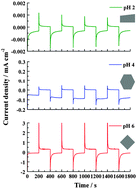
New J. Chem., 2014,38, 2098-2104
https://doi.org/10.1039/C3NJ01446K
Tuning the nuclearity of iron(III) polynuclear clusters by using tetradentate Schiff-base ligands
Three novel octanuclear, hexanuclear and tetranuclear complexes of high-spin Fe(III) ions were obtained by the reaction of the N,N′-bis-(1R-imidazol-4-ylmethylene)-ethane-1,2-diamine ligand (R = H, CH3) and its derivatives with Fe(ClO4)3·6H2O and KSCN.

New J. Chem., 2014,38, 2105-2113
https://doi.org/10.1039/C3NJ01516E
Hydrogenation of NO and NO2 over palladium and platinum nanocrystallites: case studies using field emission techniques
Hysteresis effects and kinetic instabilities have been characterised at the nanoscale for the hydrogenation of NOx species far from thermodynamic equilibrium.
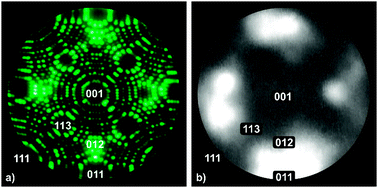
New J. Chem., 2014,38, 2090-2097
https://doi.org/10.1039/C3NJ01505J
Influence of Zn ion addition on the properties of ordered mesoporous TiO2
Ordered mesoporous titanates containing zinc have been prepared by the co-precipitation method. Upon increasing the Zn content a red-shift of the absorption edge is noted and the photoactivity decreases.
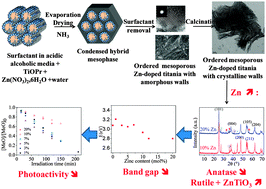
New J. Chem., 2014,38, 2081-2089
https://doi.org/10.1039/C4NJ00051J
In situ oxygenous functionalization of a graphite electrode for enhanced affinity towards charged species and a reduced graphene oxide mediator
Carbon electrodes affinity for charged specious and graphene oxide increased significantly after oxygenous functionalization.
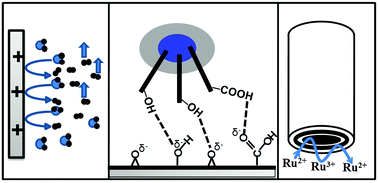
New J. Chem., 2014,38, 2120-2127
https://doi.org/10.1039/C3NJ01471A
Fabrication and optical characterization of multimorphological nanostructured materials containing Eu(III) in phosphate matrices for biomedical applications
FESEM images of the EuPO4·H2O multimorphological nanostructured material with changes in the mole ratio of Eu3+ and PO43− have been successfully synthesized using microwave assisted co-precipitation.
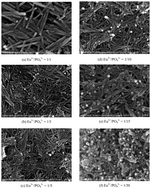
New J. Chem., 2014,38, 2114-2119
https://doi.org/10.1039/C3NJ01206A
Investigation of the elimination of VOC mixtures over a Pd-loaded V-doped TiO2 support
Mixing butanone and toluene enhances their elimination over a Pd/5%V-TiO2 catalyst and reduces the formation of toxic reaction by-products.
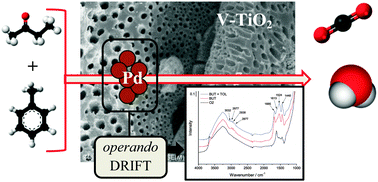
New J. Chem., 2014,38, 2066-2074
https://doi.org/10.1039/C3NJ01190A
Comprehensive study of the templating effect on the ZnO nanostructure formation within porous hard membranes
ZnO nanowires were synthesized in porous alumina and ordered mesoporous silica membranes by combining the template-assisted method with three different ZnO growth approaches.
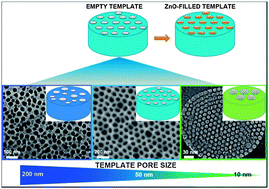
New J. Chem., 2014,38, 2058-2065
https://doi.org/10.1039/C3NJ01135F
A quinoxaline-fused tetrathiafulvalene derivative and its semiconducting charge-transfer salt: synthesis, crystal structures and physical properties
A quinoxaline-fused tetrathiafulvalene (TTF) derivative 1 has been synthesized to form a compact and planar π-conjugated donor–acceptor (D–π–A) ensemble, and its single crystal structure has been determined by X-ray diffraction.

New J. Chem., 2014,38, 2052-2057
https://doi.org/10.1039/C3NJ01200J
Ultralong H2V3O8 nanowire bundles as a promising cathode for lithium batteries
In situ transport measurement of a single nanowire demonstrates that the H2V3O8 nanowire possesses good electrical transport properties.
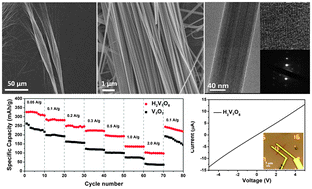
New J. Chem., 2014,38, 2075-2080
https://doi.org/10.1039/C3NJ01134H
Gold-coated halloysite nanotubes as tunable plasmonic platforms
Tunable decoration of halloysite nanotubes with gold shells to generate plasmonic structures with photothermal response in the visible-NIR regions and gold porous nanotubes.
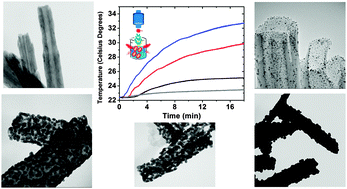
New J. Chem., 2014,38, 2037-2042
https://doi.org/10.1039/C3NJ01127E
Rational assembly and dual functionalization of Au@MnO heteroparticles on TiO2 nanowires
Hierarchical assemblies of TiO2@polymer@Au@MnO achieved using multifunctional polymeric ligand: a toolbox for further immobilization of functional molecules (DNA, fluorophore).
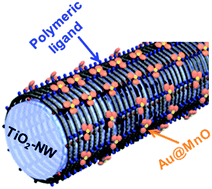
New J. Chem., 2014,38, 2031-2036
https://doi.org/10.1039/C3NJ00989K
Synthesis of ferroelectric BaTiO3 tube-like arrays by hydrothermal conversion of a vertically aligned TiO2 nanotube carpet
The systematic study on the hydrothermal conversion of TiO2 nanotubes obtained by anodic oxidation allowed the fabrication of ferroelectric BaTiO3 tube-like arrays.
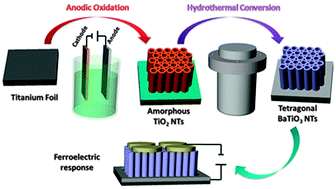
New J. Chem., 2014,38, 2024-2030
https://doi.org/10.1039/C3NJ01138K
Microwave-assisted post-synthesis modification of layered simple hydroxides
We show here that it is possible to post-functionalize metal simple hydroxide layers by performing in situ microwave-assisted reactions.

New J. Chem., 2014,38, 2016-2023
https://doi.org/10.1039/C3NJ01231J
Promotional effect of Pd single atoms on Au nanoparticles supported on silica for the selective hydrogenation of acetylene in excess ethylene
The performance for acetylene hydrogenation to ethylene over Au–Pd/SiO2 was greatly promoted when the Pd atoms were isolated by Au.
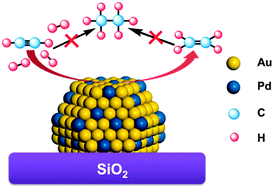
New J. Chem., 2014,38, 2043-2051
https://doi.org/10.1039/C3NJ01136D
A flexible, porous, cluster-based Zn-pyrazolate-dicarboxylate framework showing selective adsorption properties
The selective adsorption properties of a flexible Zn-pyrazolate-dicarboxylate framework based on the rare heptanuclear zinc clusters were described.
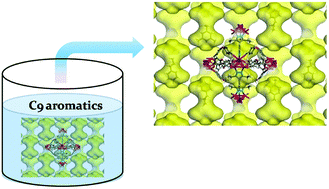
New J. Chem., 2014,38, 2002-2007
https://doi.org/10.1039/C3NJ00918A
A one-pot route to prepare class II hybrid ionogel electrolytes
IL-ionogels where ionic liquid is covalently linked to a silica network have been developed as electrolytes for DSSCs.

New J. Chem., 2014,38, 2008-2015
https://doi.org/10.1039/C3NJ01272G
Hierarchically porous Nb–TiO2 nanomaterials for the catalytic transformation of 2-propanol and n-butanol
The strengthening of acid sites in Nb–TiO2 nanomaterials with hierarchical porosity can favour the transformation of alcohols at very low temperatures.
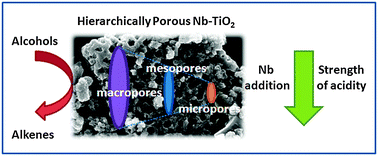
New J. Chem., 2014,38, 1988-1995
https://doi.org/10.1039/C3NJ01132A
Dinuclear ruthenium complexes containing a new ditopic phthalazin-bis(triazole) ligand that promotes metal–metal interactions
A new phthalazine-bis(triazole) ligand has been developed that provides a suitable binding pocket for coordinating two ruthenium(II) centers in a coaxial octahedral environment, enabling efficient Ru⋯Ru communication.
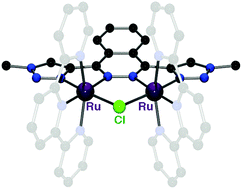
New J. Chem., 2014,38, 1980-1987
https://doi.org/10.1039/C3NJ01209C
Thick titania films with hierarchical porosity assembled from ultrasmall titania nanoparticles as photoanodes for dye-sensitized solar cells
Thin mesoporous titania films prepared by surfactant templating feature some of the highest light conversion efficiencies per thickness ratios as anodes in dye-sensitized solar cells (DSCs).
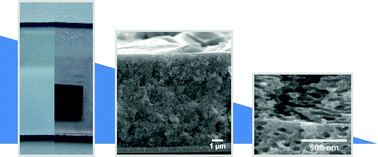
New J. Chem., 2014,38, 1996-2001
https://doi.org/10.1039/C3NJ00972F
Amphiphilic iron(II) complexes with short alkyl chains – crystal packing and spin transition properties
A novel amphiphilic iron(II) spin transition complex with gradual spin transition crystallises in different modifications.
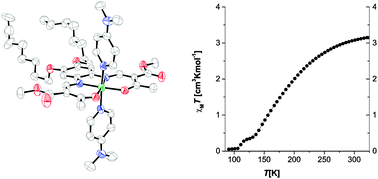
New J. Chem., 2014,38, 1965-1972
https://doi.org/10.1039/C3NJ00991B
Green synthesis of flower-like Bi2WO6 microspheres as a visible-light-driven photocatalyst
A green way of obtaining hierarchical flower-like Bi2WO6 microspheres with excellent visible-light-driven photocatalytic performance.
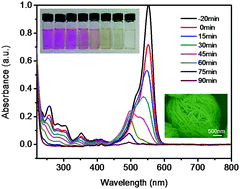
New J. Chem., 2014,38, 1973-1979
https://doi.org/10.1039/C3NJ00960B
Electrochemical properties of vanadium oxide coatings grown by hydrothermal synthesis on FTO substrates
The appropriate structure and morphology for enhanced electrochemical properties are obtained at a low temperature of 300 °C.
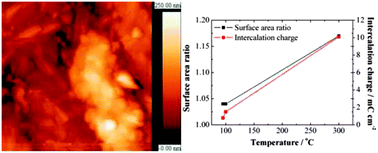
New J. Chem., 2014,38, 1959-1964
https://doi.org/10.1039/C3NJ00931A
About this collection
This themed collection, guest edited by Yann Garcia and Bao-lian Su, includes 10 review articles and 29 research reports. These offer an update of recent innovations in both fundamental and applied aspects of inorganic nanomaterials, whether they be inorganics, ceramics, complexes, hybrids or bio-inspired materials. Advanced preparation methods, coordination polymers and metal-organic frameworks, spin-crossover nanomaterials, and heterogeneous catalysis are some of the topics covered in this issue.